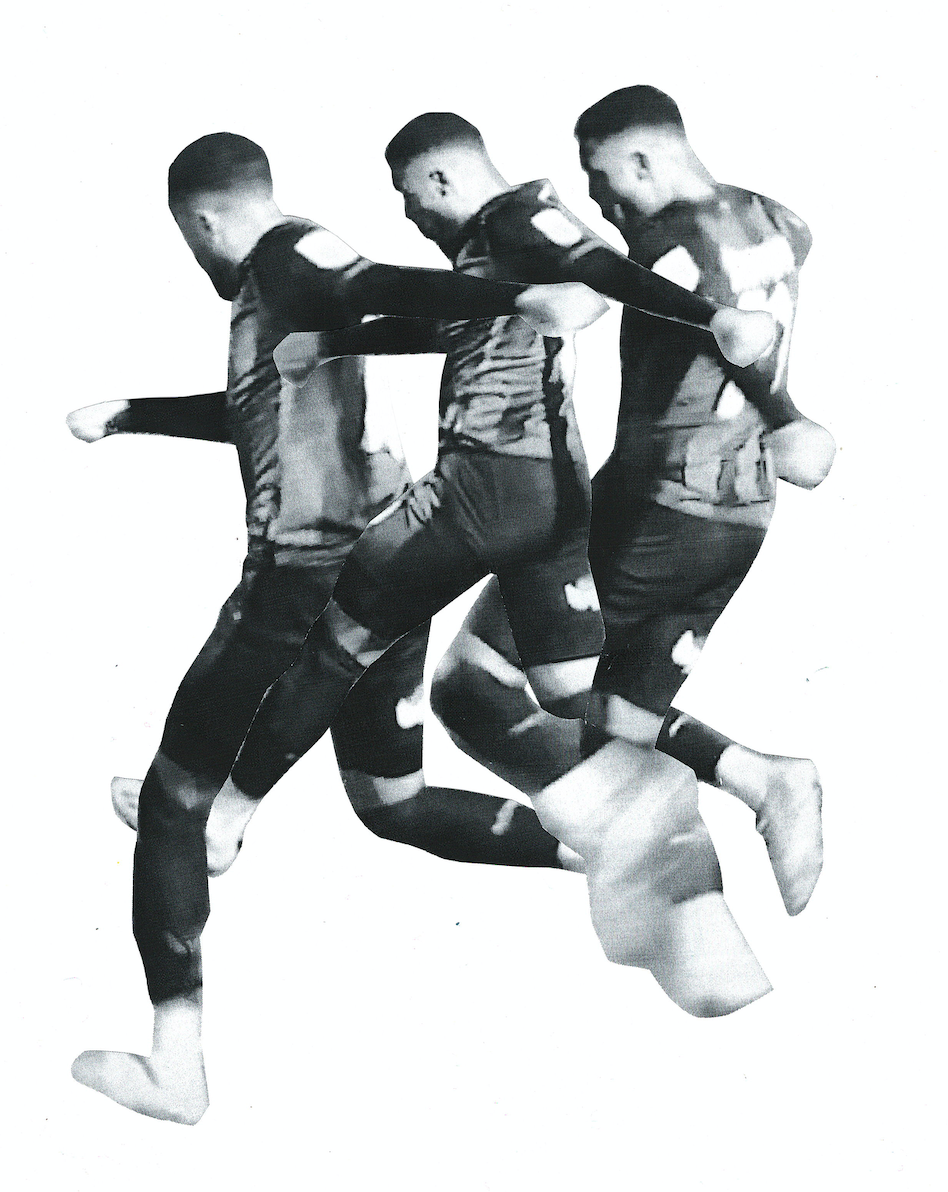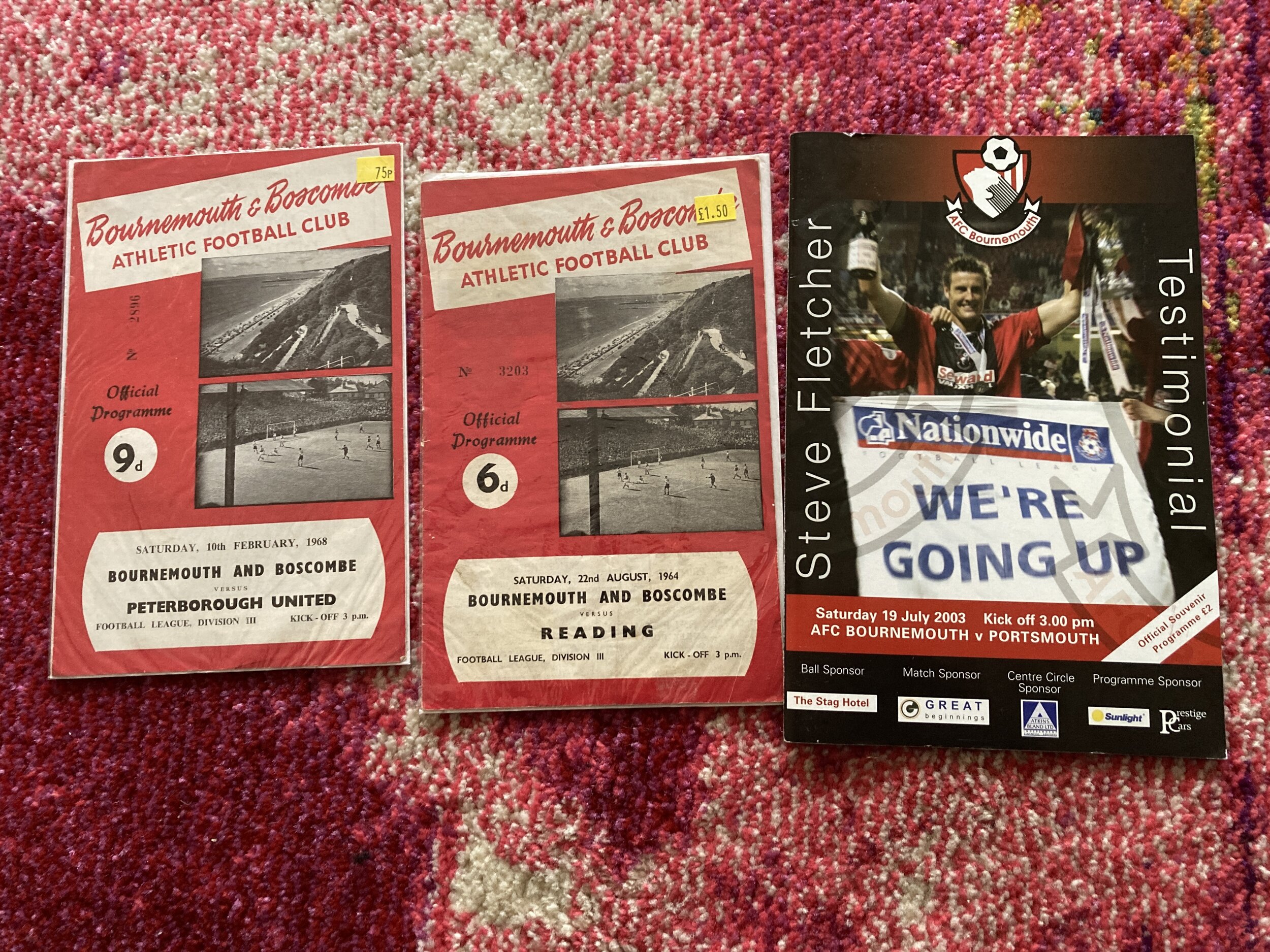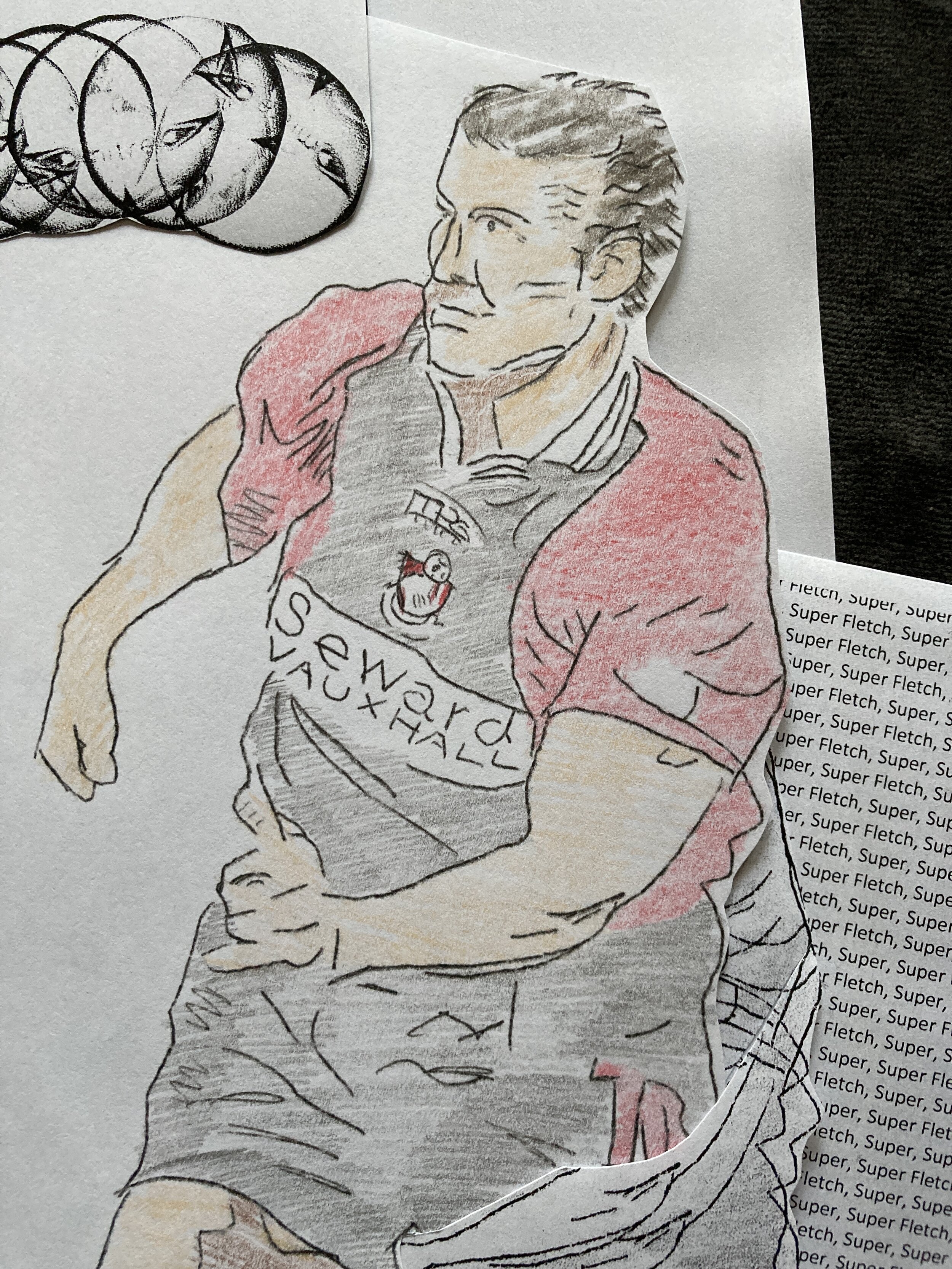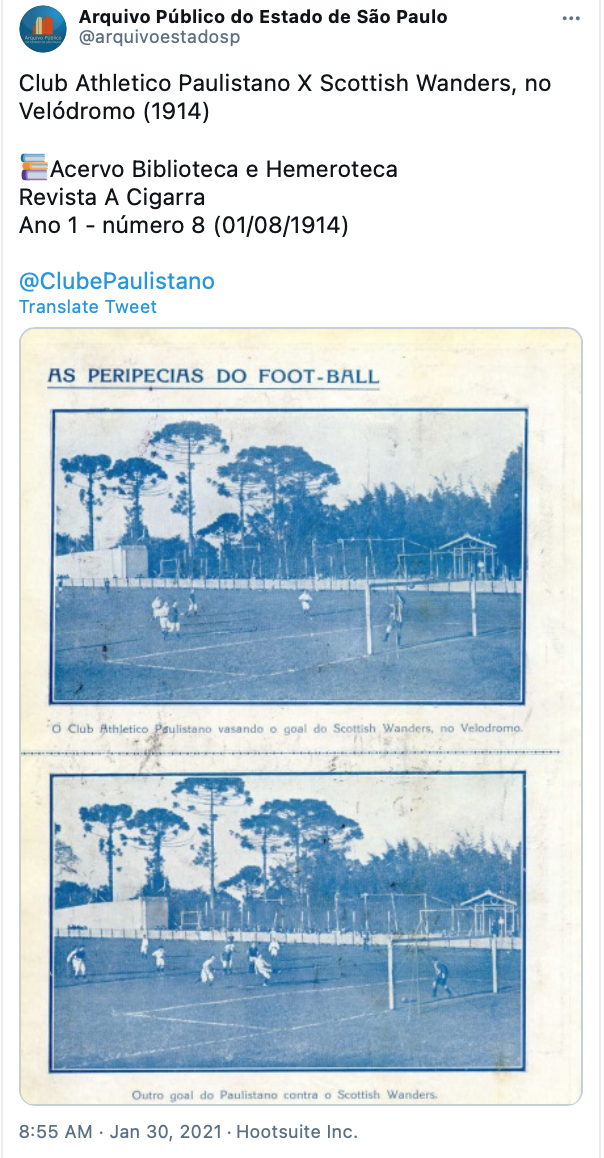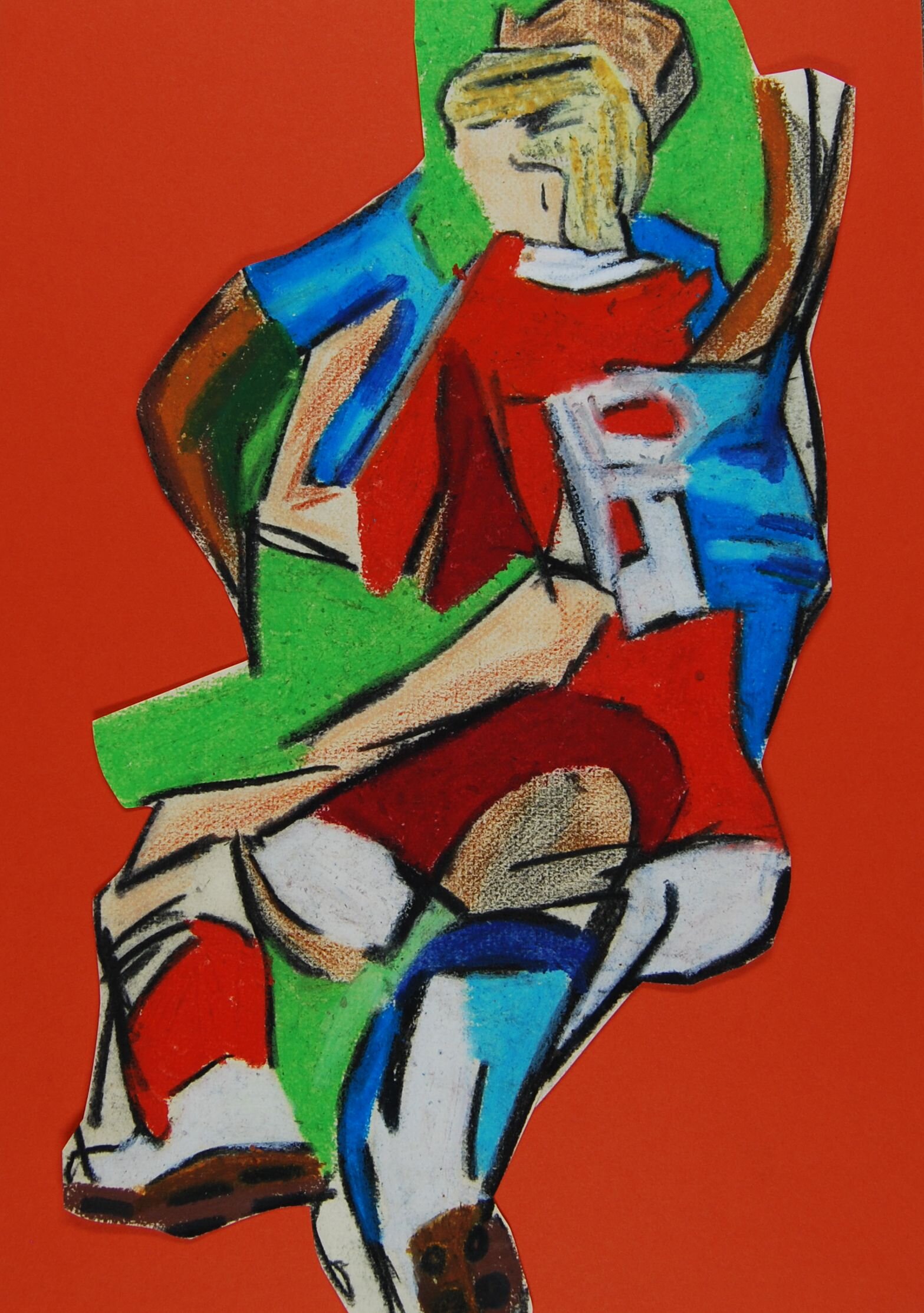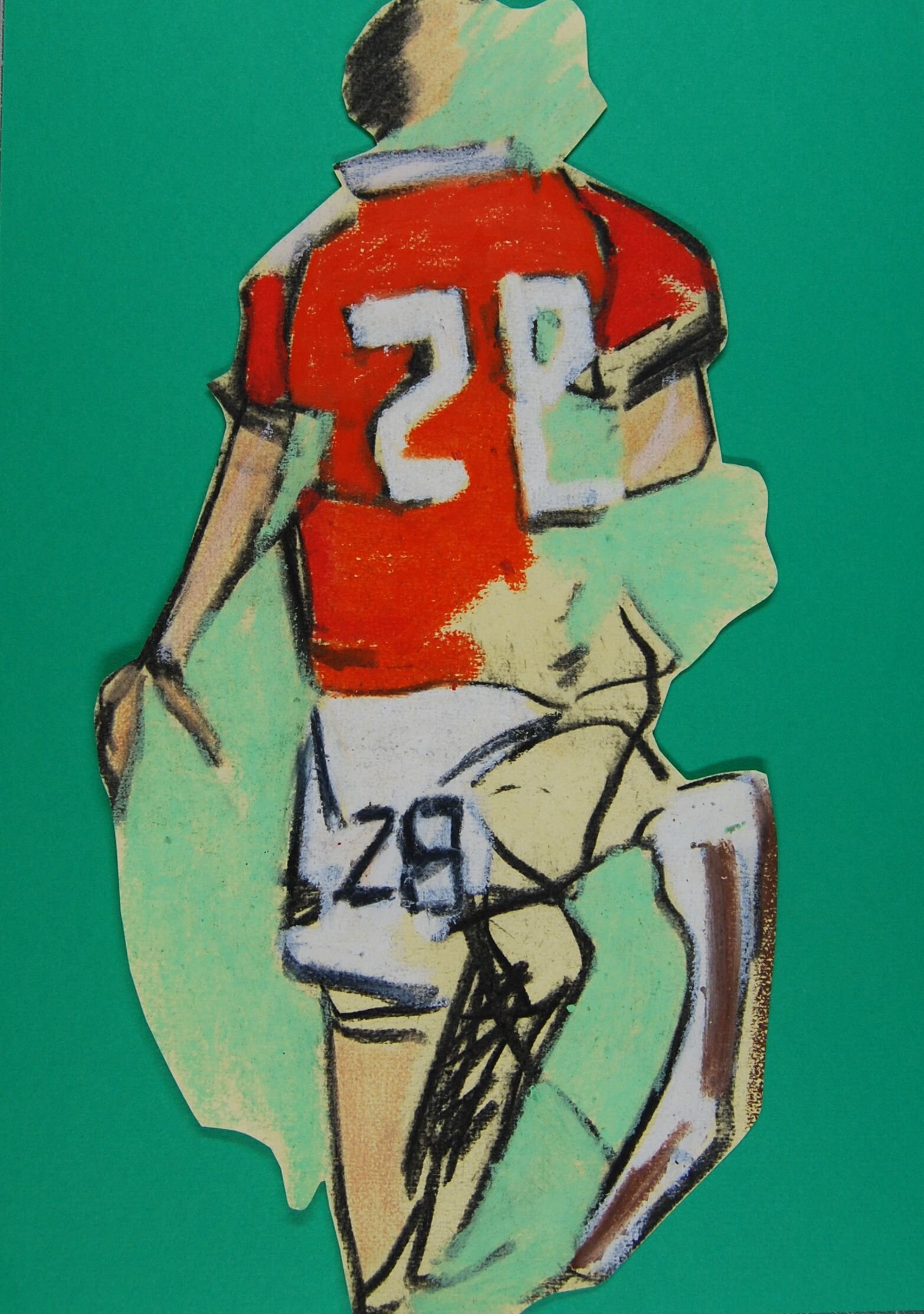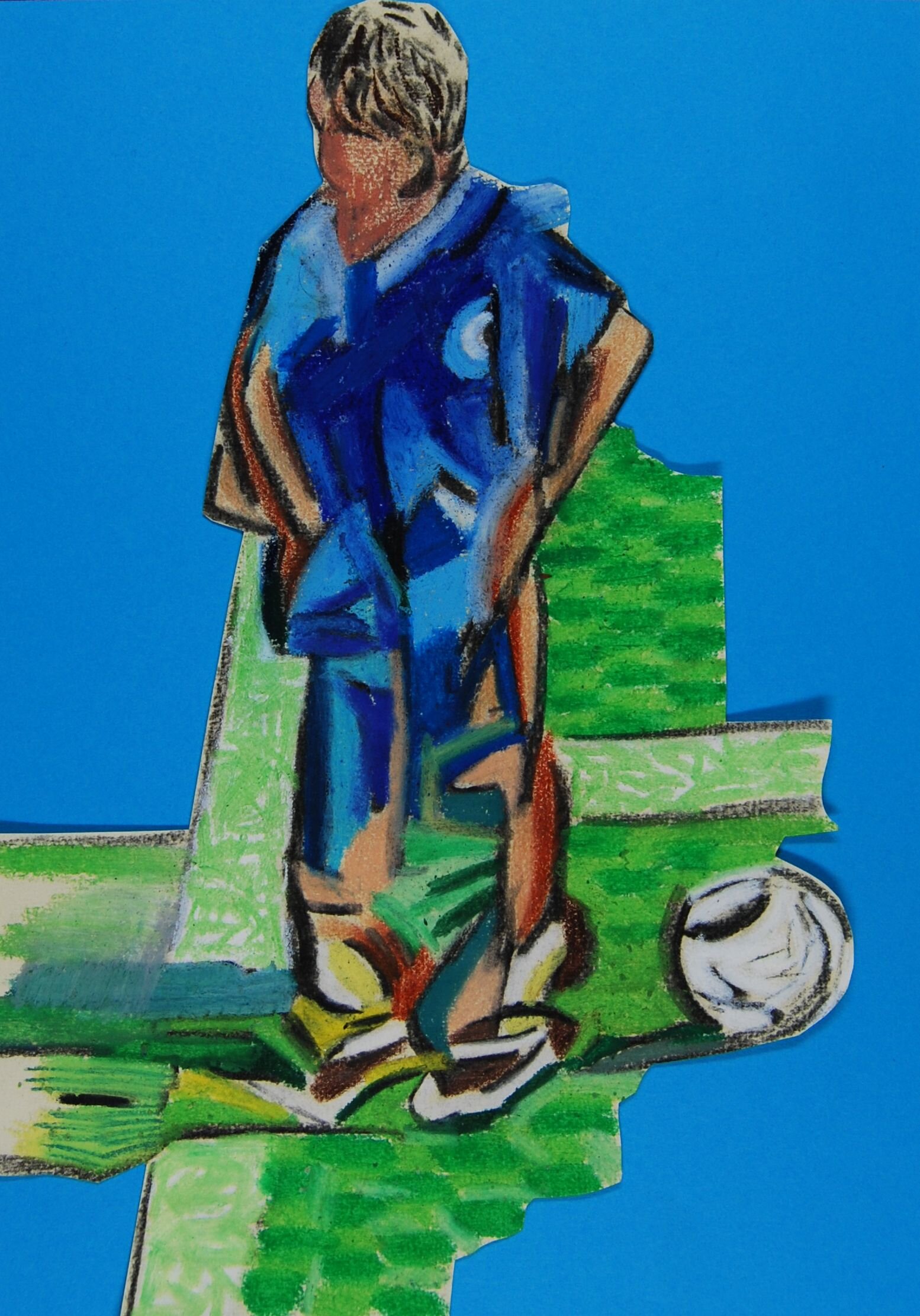
Football
Above: The St Paul’s college football team 1941-42 season, Chelt Vol 1941, University of Gloucestershire Archive.
A tweet published by the Public Archive of the State of São Paulo showing a football match between Club Athletico Paulistano vs Scottish Wanders, at the Velodrome (1914), lead me to question how is a football game documented? Photographs, live streams, reading match reports or being witness to the match?
The early 20th century saw Brazilian football gain a national popularity similar to a religion. Tim Vickery credits the spread of football due to the radio. Most of the country did not have access to any live football, so tuned into the big traditional Rio clubs, experiencing the sports dramas, controversies, wins or losses via the commentator description.
Inspecting the image, the football player figures look similar to oil pastel sketches I produced documenting football games. The figures are often difficult to see beyond a colorful uniformed blur. A contrast to watching AFC Bournemouth highlights on youtube, the audience has access to a crisper multi-vision of Arnaut Danjuma goal vs Watford. Originally, I constructed a collage of Danjuma controlling the football & taking the shot on goal. Morphing his body within his own motion, the difficulty with this image it’s just a bit boring.
Since no one is at present allowed in stadiums, apart from Kris Temple, instead of using his commentary I decided to draw from his tweet from within the stadium prior a game, and collage a line drawing of the Danjuma composition within it.
Having produced a basketball collage based upon Claude H. Sullivan audio descriptions, I felt the Danjuma work was missing something. Searching through my own archive holdings to find historic AFC Bournemouth football programs. Taking an image of Steve Fletcher, I collaged him doing what I have seen him do a thousand times, leaping and heading the ball in some direction. When a free kick or corner would happen, often the crowd chanted his name in anticipation. Similar to the basketball collage, the composition is an attempt to document that moment in a game.
Steve Fletcher playing for AFC Bournemouth



